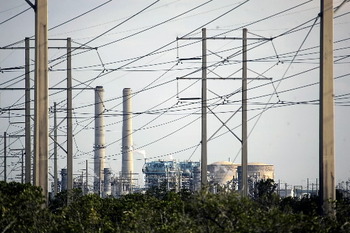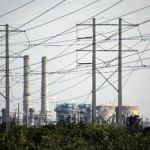By Doug Struck
Globe Correspondent
Pat yourself on your insulation, Boston.
As Erin Ailworth reported on in the Globe recently, the city was ranked number one for energy efficiency, out of 34 big cities, by a group called the American Council for an Energy Efficient Economy.
Eyes glazed already? Talk of energy efficiency does that to people. You can get a decent argument going, in the right circles, over whether we should rely on power from coal, or wind, or solar, or nuclear plants.
 But the cheapest, easiest and best source of power is energy efficiency, a phrase that means using less energy to do the same work. Every kilowatt saved is a kilowatt that we don’t have to build a power plant to produce.
But the cheapest, easiest and best source of power is energy efficiency, a phrase that means using less energy to do the same work. Every kilowatt saved is a kilowatt that we don’t have to build a power plant to produce.
Yet people don’t pay attention, much less get excited, about it. It has often baffled the experts—they call it the ten-dollar-bill-on the-sidewalk puzzle. If you see a ten-dollar bill, would you stoop to pick it up? Sure. If you were offered an easy way to slice your electric bill by $10 a month, wouldn’t you? Many people don’t bother.
At least Boston is trying to get folks to pick up the money, according to the ACEEE. The group noted the city’s efforts to do things like requiring new buildings to meet stricter energy codes, promoting rooftop vegetation, pushing insulation and air-leak retrofitting of old buildings, developing smart metering to show one’s electricity use and promoting bicycling in the city. All of which save consumers money, of course.
Equally important, it can help slow climate change. One reason people don’t get excited by that connection is it is hard to see how saving a little bit of energy here and a little bit of energy there is going to make much of a difference.
But it does. In 2005, greenhouse gas emissions in the Northeast actually began to drop—a stunning reversal of expectations—and have continued to slide. Analysts scoffed that we did not have much to do with it; the drop came because cheaper and cleaner natural gas replaced coal, and when the recession hit in 2009, factories closed and business was curtailed.
But as the economy has eased and emissions have stayed low, analysts have re-parsed the data. They now believe a significant chunk of that reduction was due to energy efficiency acts that have cut back on our use of power.
“The recession was a factor, but not the driving factor” in reduced emissions, said Daniel Sosland, executive director of the non-profit research group Environment Northeast. His group calculates that energy efficiency has saved as much between 2001 and 2011 all the alternative sources of power combined. Some $500 million in transmission line construction has been cancelled because of the savings, Sosland said.
“When we really invest in energy efficiency, we get rid of dirty plants, and we do it in a way that saves consumers money, “ he said.
Too often, people confuse calls for energy efficiency as beckoning us all to shiver in cold homes and take 90-second showers. It’s really not about that. It’s about using energy smarter, in a less wasteful and less expensive way. Its about doing what we need—and what we want—while still using less energy. And picking up the ten-dollar bill.
